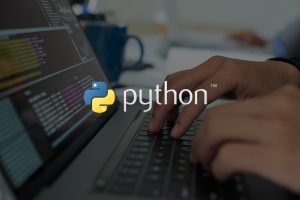 In recent years, Python web development has seen an exponentially increase in acceptance as it offers extensive benefits to multiple industry segments. But the one industry that has seen a monumental application of Python is data science and AI / ML.
In recent years, Python web development has seen an exponentially increase in acceptance as it offers extensive benefits to multiple industry segments. But the one industry that has seen a monumental application of Python is data science and AI / ML.
Many businesses have included Python machine learning systems into their operational strategies to automate various segments of their activities, and as a result, Python web development has grown in prominence. Organisations have also started to invest significantly in applications that use artificial intelligence or machine learning, all of which requires robust Python web development know-how.
Here, we look at some of the best Python libraries that contribute significantly to Python web development.
1. TensorFlow
Developed by Google in collaboration with Brain Team, TensorFlow is one of the most widely Python programming libraries and is present in almost every Google machine learning application. It is a computational library used to write new algorithms that have many tensor operations.
Features
- It uses techniques like XLA for quick linear algebra operations
- Its flexible & modular architecture enables activation of standalone options
- Highly efficient on large-scale systems
- Large Community and continuous improvements
2. Keras
Keras was originally developed as a Python programming platform that was used with neural systems. It has developed into an independent library with a wide array of tools used by many tech giants like Netflix, Uber, and Yelp for image and text data.
Features
- Runs smoothly on both CPU and GPU
- Supports almost all neural network models and can be used to build more complex models
- Ideal for innovative research
3. Pytorch
Developed by Facebook’s AI team, Pytorch is ideal for complex tasks such as language processing & concepts that are utilised by large corporations such as Walmart, Uber, and Microsoft. With an architecture that improves development speed and optimizes performance – essential for projects with large data sets – it is one of the preferred Python libraries that also has cloud support.
Features
- Hybrid front-end enables flexibility, speed & optimization in C++ runtime environments
- Rich performance in both research and production environments with native support for asynchronous execution
- Deep integration with Python and other libraries & packages such as Cython and Numba
4. NumPy
The development of Numpy added new aspects in numerical computing and machine learning capabilities to Python. It offers an extensive range of numerical computations such as matrix calculations, linear algebra and supports complex mathematical functions for faster execution.
Features
- Interactive and easy to use
- Simplifies complex mathematical implementations
- Enables easy coding & is widely used with many open source contributions
5. Scikit-Learn
To a very large extent, Python’s computing abilities are mainly due to libraries such as NumPy and Scikit-Learn. It also supports numerical calculations & offers tools for performing scientific and engineering computations
Features
- Multiple ways to check accuracy of supervised models
- Extensive algorithms & principal component analysis
- Useful for extracting features from images and text
6. Theano
Developed by the Montreal Institute of Learning Algorithms to determine mathematical expressions, Theano helps create deep learning neural networks by reusing codes to manage multiple computations and reduces development time.
Features
- Quick data-intensive computations
- Optimized for speed and stability
- Dynamic C code generation
- Detects and fixes multiple errors & ambiguities in any given model
7. Pandas
Provides impressive analysis with a variety of tools and data structures and runs complex data operations accurately with minimum input. It also enables data operations, grouping, filtering & data analysis – which is a highlight.
Features
- Ensures easier data manipulation
- Enables easy re-indexing, iteration, sorting, and aggregations
- Concatenations and visualizations are other notable features
8. SciPy
SciPy offers modules for utilization of multiple ML algorithms with its high speed and top-notch execution, that enables rapid computation.
Features
- Aids mathematical operations, numeric integration, image manipulation and signal processing
9. LightGBM
A highly popular ML library that helps build new algorithms by using redefined elementary models and decision trees.
Features
- High production efficiency
- Highly intuitive
- Does not render errors when considering NaN and other canonical values
10. Eli5
The Eli5 ML library is a combination of visualization and debugging features applicable for all models that also allows tracking of all algorithmic working steps.
Features
- Critical for dependencies with other Python packages
- Improved functionalities for legacy applications and to implement newer methodologies
To get the best out of Python web development and machine learning capabilities for your business, contact Smart Sight Innovations and speak to our experts.














